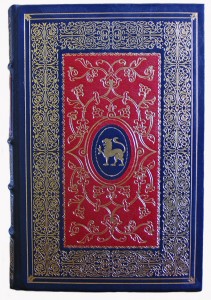What Are the Components of a Printed Book?

Whether it was written by hand, composed on a typewriter over the course of several frantic weeks, or assembled through long night sitting in front of a word processor of a laptop, eventually the book will be finished. So your next question might be, what are the components of a fully printed book?
The first draft of any book will commonly be referred to as a manuscript. Whether it was written by hand, composed on a typewriter over the course of several frantic weeks, or assembled through long night sitting in front of a word processor of a laptop, eventually the book will be finished. So your next question might be, what are the components of a fully printed book? Let’s find out.
Front Matter
Simply put, the front matter is everything you would expect to find when you first open the printed book. Here is where you will find vital publication information, such as the title, the author, who published it, the ISBN, and the number the Library of Congress uses to record it. The individual elements of the front matter are:
- The Half-Title: This is merely the title of the book itself.
- Frontispiece: Any artwork used to accompany the title page.
- Title Page: This page contains information about the title, author, and publisher.
- Copyright Page: This page includes information relating to the copyright protecting the work.
Other parts of the front matter you will see include:
- Dedications and acknowledgments;
- The table of contents;
- Forewords and introductions – forewords are written by someone who is not the author, while the author or co-author writing the opening.
The Body
The body holds the majority of the printed book’s text. For a novel, this would be the story; for a nonfiction book, whatever the narrative is – even nonfiction books can be written to tell a story with the impact and suspense of a typical novel.
End Matter
The end matter is what you would expect to find at the end of the printed book. This material includes:
- The Glossary: Glossaries are where the reader can look up terms, words, and jargon they might not otherwise know.
- The Bibliography: Bibliographies are far more commonly seen in nonfiction books. This section lists all of the sources the author used to collect their research.
- The Index: Indexes aren’t always required, but are tremendous additions to nonfiction books. The index allows the reader to quickly find the most salient points from the book and see which pages they should turn to without needing to flip through the book page by page.
Advantage Book Binding Can Help You Create the Printed Book You’ve Always Wanted!
Are you interested in having a bound novel? Are you entering the workforce, and need a bound portfolio to showcase your work? Advantage Book Binding offers plenty of services and binding types that are perfect for suiting your needs. We also offer specialty binding options for those of you looking for something extra special.
Advantage Book Binding can advise you as to what kind of binding style will work best for your specific project, taking into consideration budget requirements to provide you with the most cost-effective and project-specific solution for you. Please contact us today for more information, and keep up with us on Facebook, Google +, Twitter, and LinkedIn. Also, don’t hesitate to visit us at our Glen Burnie headquarters.
